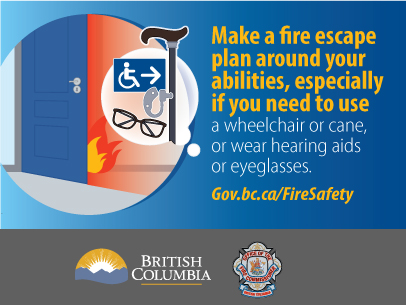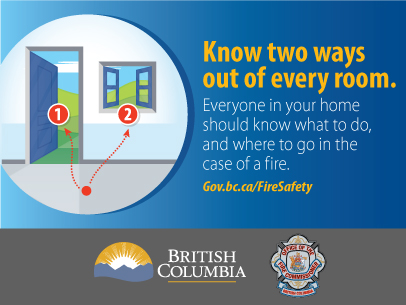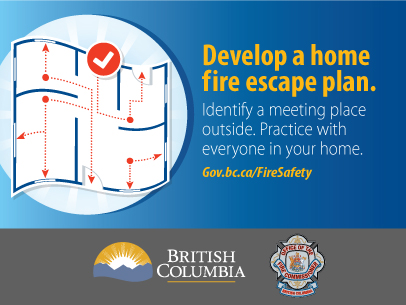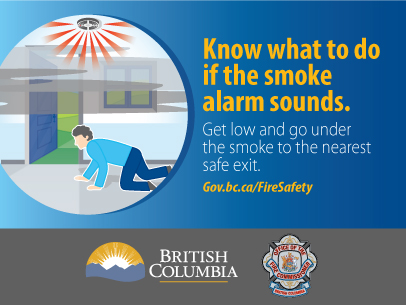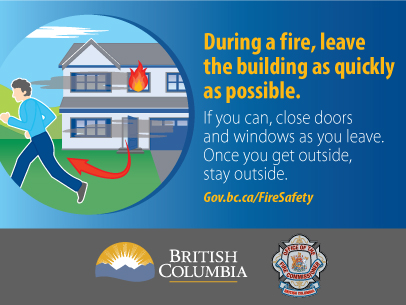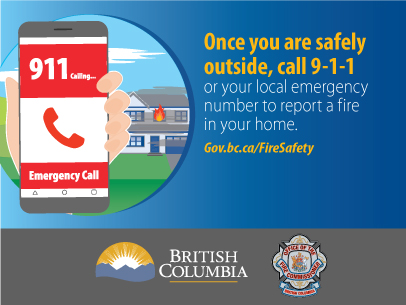Home fire escape planning social media toolkit
Fire can spread quickly throughout a home, leaving as little as two minutes to escape safely once the smoke alarm sounds. Making an escape plan and practising an escape drill are important elements of home fire safety.
Social media toolkit
How to use this toolkit
Share this content on social media channels. You can copy this content or customize it.
Messages to share
These key messages have been formatted to be used in a post.
- If there is a fire in your home, you could have less than 2 minutes to get out safely once the smoke alarm sounds
- Make a fire escape plan. Draw a map of each level of your home showing all doors and windows. Discuss the map with everyone who lives with you
- Plan two ways out of every room. Choose an outside meeting place in front of your home
- Make a fire escape plan around your abilities. If you need to use a wheelchair or a cane, make sure you can get to it easily and get out quickly. If you wear hearing aids or eyeglasses, put them next to your bed while you are sleeping
- Make sure all doors and windows open easily
- Practise your fire escape plan by having a home fire drill at least twice a year with everyone in the home
- If there is a fire in your home, get out and stay out. Never go back inside for people, pets or things
Hashtags
#FireSafety #FirePrevention #PracticeYourPlan #GetLowAndGo #GetOutStayOut
Graphics
Download and use the graphics below, either by themselves or add additional information in your post to reinforce the message.
Prevention and safety messaging
- Plan ahead! If a fire breaks out in your home, you may have only a few minutes to get out safely once the smoke alarm sounds. Everyone needs to know what to do and where to go if there is a fire.
- Make a home escape plan. Draw a map of your home showing all doors and windows. Discuss the plan with everyone in your home.
- Know at least two ways out of every room, if possible. Make sure all doors and windows leading outside open easily.
- Have an outside meeting place (like a tree, mailbox or light pole) a safe distance from the home where everyone should meet.
- Practise your home fir drill at night and during the day with everyone in your home, twice a year.
- Practise using different ways out.
- Teach children how to escape on their own if you can’t help them.
- Close doors behind you as you leave, if possible.
Additional resources
Follow the links below for resources from National Fire Protection Association (NFPA) and the U.S. Fire Administration (FEMA).

